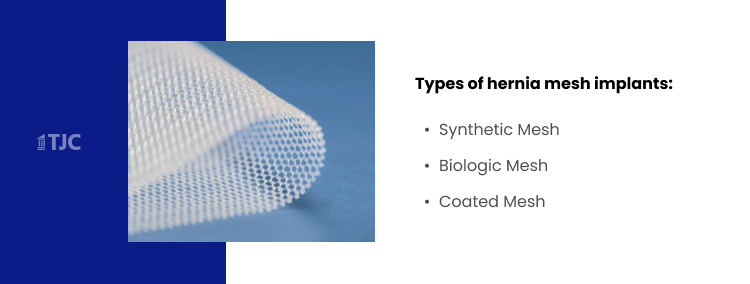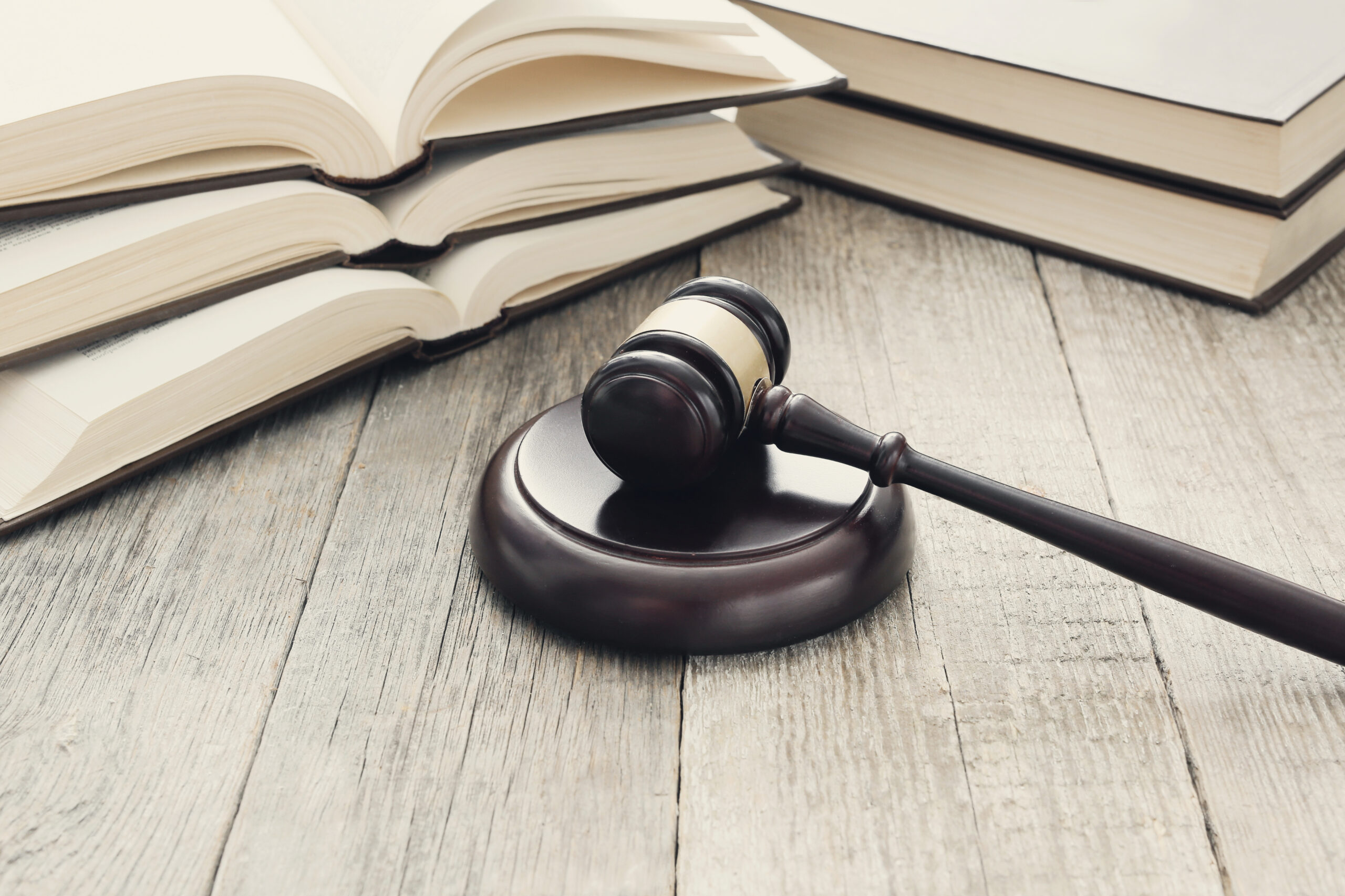Hernia mesh implants, designed to strengthen and support the abdominal wall, have been used in hernia surgeries for decades. Hernia mesh implants are typically made from synthetic or biologic materials and are used to repair inguinal, femoral, and other abdominal hernias.
Since the mid-2000s, the number of hernia mesh litigation cases has increased significantly. Patients who experienced complications have filed hernia mesh claims in court, alleging that the products were defective and caused harm.
Key Takeaways:
- Lawsuit Status: Ongoing, with major settlements like Bard’s $1 billion resolution of nearly 40,000 claims, while cases against other manufacturers, such as Covidien and Ethicon, continue
- Who Can File: Individuals who suffered complications like infections, chronic pain, or required additional surgeries due to defective hernia mesh
- Estimated Time: Varies by case, settlements often resolve faster, while trials may take several years
- Settlement Amounts: Average settlements range between $50,000 and $200,000, depending on case specifics, with some exceeding $800,000
- Companies Involved: C.R. Bard (Becton Dickinson), Ethicon (Johnson & Johnson), Covidien (Medtronic), and Atrium Medical
Recent hernia mesh trial outcomes have led to some manufacturers settling with plaintiffs, which has helped many claimants receive compensation for their suffering.
However, settlements and verdicts in hernia mesh lawsuits vary greatly. The amounts are often being influenced by the nature of the injury, the degree of negligence on the part of the manufacturer, and the individual circumstances of the lawsuit.
Hernia Mesh Lawsuit Updates
Hernia mesh lawsuits continue to affect thousands of people across the United States, as patients report severe complications from defective or faulty mesh implants. These lawsuits generally involve claims against manufacturers who are alleged to have sold products with defects, causing pain, infection, organ perforation, and other serious health issues.
Multidistrict Litigation (MDL) and case consolidation:The hernia mesh litigation has grown significantly over the years, and several multidistrict litigations (MDLs) have been established to streamline the process of dealing with the large volume of cases. As of recent updates, MDL No. 2846 is one of the most notable and involves thousands of lawsuits filed against Atrium Medical, C.R. Bard, and other companies that manufactured defective mesh products. This MDL is primarily centralized in the District of New Jersey.
The MDL process allows the cases to be handled more efficiently by grouping them together under the management of a single judge, helping to avoid redundant discovery, motion practice, and pretrial proceedings. It also allows plaintiffs to share resources and expedite trials for the defective product cases.
Recent outcomes and trends:
There have been several significant developments in hernia mesh litigation, with numerous settlements and trial verdicts:
- C.R. Bard and Atrium Settlements: There have been a number of settlements for cases involving the C.R. Bard’s Kugel Mesh and Atrium C-Qur Mesh. These settlements often come with compensation for medical bills, pain, suffering, and lost wages, though specific amounts can vary widely.
- Verdicts and Trials: Several trial cases have resulted in plaintiffs receiving favorable verdicts. In one high-profile case, a jury awarded $3.6 million to a woman who suffered complications from her hernia mesh implant. These outcomes have set the stage for future trials and may influence settlement negotiations moving forward.
- Increased Number of Cases: The number of active lawsuits has been steadily increasing as more patients come forward with complaints about hernia mesh complications. The MDL has seen ongoing filings, and there are still pending trials that could result in new rulings, possibly affecting future litigation strategies.
Complications and long-term effects:
The complications associated with hernia mesh devices vary, but many plaintiffs cite significant pain, infections, bowel obstructions, and the need for further surgeries to remove or replace the mesh. These complications often lead to prolonged medical expenses and a diminished quality of life, making the lawsuits an important avenue for compensation for the injured parties.
Patients who have received hernia mesh implants and believe they have experienced complications may still be eligible to file claims. The ongoing MDL cases are expected to provide a precedent for how future claims will be handled, particularly in terms of compensation and liability.
What Is Hernia Mesh?
Hernia mesh products are used to support the abdominal wall and provide stability after hernia surgery. The mesh is typically made from synthetic materials like polypropylene or polyester, but there are also biologic versions made from animal tissue. The hernia mesh implants are designed to prevent the hernia from recurring after surgery by strengthening the weak area of the abdominal wall.
Types of hernia mesh implants:
- Synthetic Mesh: The most common type used in hernia surgery, made from materials such as polypropylene or polytetrafluoroethylene (PTFE). While effective in most cases, these can cause complications like mesh migration and chronic pain in some patients.
- Biologic Mesh: Made from animal tissue, this type of mesh is often used in patients who are at risk of infection or those who have compromised immune systems. However, biologic meshes are generally more expensive than synthetic meshes.
- Coated Mesh: Some meshes are coated with special substances designed to reduce the risk of adhesions or tissue damage. These coatings may include collagen or titanium, but their effectiveness is still under scrutiny.
Some examples include:
- Dynamesh IPOM: Made from polypropylene and PVDF with a large pore size of 1–2 mm
- Sepramesh: Made from polypropylene and sodium with a large pore size of 1–2 mm
- Ultrapro: Made from polypropylene and polyglecaprone with a large pore size of greater than 3 mm
- Ti-mesh: Made from polypropylene and titanium with a large pore size of greater than 1 mm
- Prolene: Made from polypropylene
- Trelex: Made from polypropylene
- Goretex: Made from ePTFE
- Surgipro: Made from polypropylene
- Parietene: Made from transparent macroporous polypropylene on one side and an absorbable collagen film on the other
- Composix: Made from polypropylene mesh with a submicronic ePTFE barrier
Hernia Mesh Related Problems
Hernia mesh implants, commonly used to repair hernias, have been associated with several serious medical complications. While these devices are designed to provide a durable solution, numerous patients have experienced adverse effects due to defective mesh materials, poor design, or improper implantation. These issues can lead to long-term health problems, requiring further surgeries and extensive medical care.
Chronic Pain
One of the most common complications from hernia mesh implants is chronic pain. This pain may arise from the mesh itself, which can irritate surrounding tissues or nerves.
In some cases, patients may experience foreign body reaction, where the immune system perceives the mesh as an invader and triggers an inflammatory response. This inflammation can cause discomfort or sharp pain at the site of implantation and may persist for months or even years.
Infections
Mesh implants can become infected either during implantation or due to the body’s immune reaction to the foreign material.
Biofilm formation is a common problem, where bacteria grow on the mesh, creating a protective layer that makes infections difficult to treat. This can lead to deep tissue infections, sepsis, or the need for mesh removal surgery.
Bowel Obstructions
Hernia mesh implants, particularly those that migrate or erode, can lead to bowel obstructions. This occurs when the mesh moves out of place and interferes with the normal functioning of the intestines.
Bowel perforations, caused by sharp edges of the mesh or mesh migration, can result in severe abdominal pain, vomiting, and even peritonitis, a life-threatening infection.
Mesh Erosion
Over time, some meshes can degrade or erode into nearby tissues, leading to severe complications. Polypropylene, the most commonly used material in hernia mesh, can degrade over time, especially in the presence of bodily fluids, causing the mesh to lose its structural integrity.
This erosion can damage surrounding organs, including the intestines and bladder, leading to long-term health issues and additional surgeries.
Organ Perforations
In some cases, the mesh may perforate the surrounding organs. The rigid structure of some mesh types can puncture or damage delicate tissues like the intestines, bladder, or bowel.
Mesh shrinkage, which can occur over time, may also contribute to this issue, pulling on surrounding tissues and causing perforations.
Reports of defective products like C.R. Bard’s Kugel Mesh and Ethicon’s Physiomesh have been widespread, often linked to:
- Mesh erosion that leads to painful internal damage
- Migration of mesh away from its original placement, causing further harm
- Infections due to faulty material or poor design
Hernia Mesh Lawsuit Requirements
To successfully file a hernia mesh lawsuit, specific criteria must be met to ensure your case is eligible for legal action. Below are the critical requirements that must be established to proceed with a claim:
Surgery Date
Your hernia repair surgery must have occurred on or after January 1, 2006. This is a crucial date because mesh products used before this time had different manufacturing standards, and many of the problematic products causing legal disputes were introduced after this period.
Mesh implants introduced after 2006 are more likely to have been involved in complications, and are therefore subject to more litigation.
Serious Complications
The core of any hernia mesh lawsuit is the serious complications that arise due to defective mesh implants. If you suffered any of the following complications as a result of the mesh, you could be eligible for a lawsuit:
- Infection: A common issue with mesh implants, leading to further health problems or the need for additional surgeries.
- Mesh Migration: When the mesh moves from its original position, causing severe pain, obstruction, or damage to surrounding tissues.
- Adhesion: The mesh adhering to nearby organs, often causing bowel obstructions or perforations.
- Hernia Recurrence: The mesh failing to effectively repair the hernia, leading to reoccurrence of the injury.
- Intestinal Blockage: The mesh causing a blockage in the intestines, which can be life-threatening.
- Organ Perforation: The mesh puncturing organs like the intestines, which may require immediate medical intervention.
It’s essential to prove that these complications appeared more than 30 days after surgery, as this timeframe is typically when complications from defective mesh are first noticed. Without this evidence, your claim may not be substantiated.
Required Additional Surgery
A pivotal requirement in hernia mesh lawsuits is that you have required additional surgery to repair, remove, or replace the defective mesh. This could include:
- Surgery to remove the mesh if it caused damage or didn’t heal the hernia properly.
- Additional surgeries to repair the damage caused by mesh complications (e.g., bowel obstruction, infection).
If you did not require follow-up surgery to correct or mitigate the damage, it could weaken your case. Demonstrating that your injury was severe enough to warrant another procedure is often critical in winning a lawsuit.
Statute of Limitations
Each state has a statute of limitations (the time within which you must file your lawsuit) that ranges from 1 to 3 years. This timeline starts from when you notice complications or are diagnosed with an injury related to the mesh. If you miss this deadline, your claim could be dismissed, no matter how valid it is. Therefore, prompt action is essential once complications arise.
Additional Factors
Beyond the basic criteria, several additional factors can influence the viability of your lawsuit:
- Manufacturer of the Mesh: Some manufacturers, such as Bard or Ethicon, have faced more legal action due to defective products. The manufacturer’s history and product recall records can impact your claim.
- Type and Severity of Injury: The more severe your injury (e.g., requiring permanent disability or resulting in a significant loss of quality of life), the stronger your case may be. Injuries that lead to permanent disability or disfigurement can significantly increase compensation amounts.
- Impact on Day-to-Day Activities: If your injury prevents you from working, requires ongoing medical care, or significantly disrupts your daily life, these factors will be taken into consideration when determining damages.
- Effect on Personal Relationships: Injuries that cause long-term pain or disability often affect personal relationships. If your condition causes significant emotional or physical distress to you or your family members, it may impact the lawsuit outcome.
Companies Facing Hernia Mesh Lawsuits
Several manufacturers are at the center of the hernia mesh lawsuits due to their defective products. These manufacturers include Bard, Ethicon, and Covidien. These companies have been accused of selling hernia mesh implants that were defectively designed or poorly manufactured, leading to serious complications for patients.
Bard and Davol
Bard, in collaboration with its subsidiary Davol, has been at the forefront of hernia mesh litigation, primarily due to the controversial C-Qur mesh. This product was marketed as a safer and more effective option for hernia repair, but patients who received the C-Qur mesh have reported severe complications, including chronic pain, infections, bowel obstructions, and adhesions.
These complications arose due to the mesh’s design and the materials used in its construction, which were allegedly prone to degradation and inflammation. Over the years, thousands of lawsuits have been filed against Bard, claiming that the C-Qur mesh was defectively manufactured and caused irreversible damage to patients.
Bard and its parent company, Becton Dickinson, reached a landmark $1.7 billion settlement to resolve the majority of these claims, providing compensation for the many patients affected by the defective mesh.
This settlement highlights the severity of the issue and the widespread impact that Bard’s products had on patients. However, despite this settlement, ongoing litigation continues in certain jurisdictions, and some victims are still seeking justice and compensation.
The settlement has not fully resolved all claims, and many lawsuits remain active as attorneys continue to fight for further damages.
Ethicon
Ethicon, a subsidiary of Johnson & Johnson, has been embroiled in lawsuits related to its Physiomesh product. This mesh was designed to repair hernias but quickly became the subject of numerous complaints due to its failure to perform as expected.
Patients who received the Physiomesh have reported a range of issues, including mesh migration, adhesion formation, and infections. These problems were often severe, leading to the need for corrective surgeries and long-term health issues for the patients affected. In 2016, following a recall prompted by reports of adverse events, Ethicon pulled the Physiomesh from the market.
Despite the recall, lawsuits against Ethicon have continued, with thousands of individuals seeking compensation for the complications caused by the defective mesh. Legal proceedings have been extensive, with many cases being consolidated into multidistrict litigation (MDL), making it easier for plaintiffs to pursue claims collectively.
The legal battle is still ongoing, as Ethicon faces not only the costs associated with the recall but also the mounting litigation that continues to unfold across the country. Victims of the Physiomesh have been fighting for justice, and their attorneys are working to hold the company accountable for its role in selling a product that caused so much harm.
Atrium Medical Corporation
Atrium Medical Corporation, the manufacturer of the C-Qur mesh, has faced its own set of challenges in the hernia mesh litigation space.
Like Bard, Atrium’s mesh implants have been linked to significant health complications, including chronic pain, infections, bowel obstructions, and other long-term issues. The C-Qur mesh, which was marketed as a safer alternative due to its unique coating, failed to meet the expectations of both surgeons and patients.
The product’s design and the use of polypropylene as a primary material were cited as factors that contributed to its failure, leading to numerous lawsuits from patients who were injured by the product.
Despite facing thousands of legal claims, Atrium has continued to defend its product in court, engaging in settlement talks and legal battles.
In recent years, the company has been involved in complex litigation, attempting to resolve claims while facing growing public scrutiny over the safety of its hernia mesh implants. The ongoing litigation underscores the serious nature of the complications caused by the C-Qur mesh and the widespread impact it has had on patients’ lives.
Many plaintiffs remain hopeful for compensation, but the legal proceedings are far from over, and the future of Atrium’s liability in these cases remains uncertain.
Other Companies
Beyond the major players like Bard, Ethicon, and Atrium, several other companies have faced lawsuits over defective hernia mesh implants. These include manufacturers like LifeCell and the makers of Kugel mesh, which have also been accused of selling mesh products that caused significant harm to patients.
LifeCell’s Strattice mesh, for example, has been linked to serious complications, including infections, organ damage, and chronic pain. Kugel mesh, originally manufactured by Davol (before its acquisition by Bard), has similarly been the subject of extensive litigation due to issues with its design and the risks it posed to patients.
These companies are still dealing with numerous lawsuits and legal challenges related to their hernia mesh products. The ongoing litigation process has highlighted the broader issue of mesh implants’ safety and the lack of adequate long-term testing before these devices were widely distributed.
As lawsuits continue to mount, these manufacturers are working through the legal system to resolve claims, though many patients affected by these products continue to seek justice and compensation for the harms they have suffered.
Hernia Mesh Lawsuit Average Payout
The average payout for a hernia mesh lawsuit can vary greatly depending on several key factors, including the severity of the injuries, the strength of medical evidence, and the manufacturer involved. Legal experts and settlement reports provide estimates that can help potential plaintiffs understand what to expect.
Recent estimates suggest that settlements typically range from $60,000 to $70,000 for many cases, including those involving Bard hernia mesh lawsuits. However, some settlements may reach as high as $70,000 to $80,000, depending on the specifics of the case, such as the extent of complications or additional damages.
On the other hand, cases with more severe complications or less compelling evidence may result in lower settlements, ranging between $40,000 and $60,000.
Take Note: These payouts typically apply to cases where patients have experienced ongoing health issues but have less conclusive medical documentation or lower levels of injury severity.
How To Fill a Hernia Mesh Lawsuit
If you or a loved one has suffered from complications due to a defective hernia mesh implant, filing a lawsuit can help seek justice and compensation for your injuries. Below are the essential steps involved in filing a hernia mesh lawsuit, along with important tips to guide you through the process.
1. Consult an Experienced Hernia Mesh Lawyer
The first step in filing a hernia mesh lawsuit is to consult with an attorney who specializes in hernia mesh litigation. A skilled lawyer will assess whether you have a viable claim and guide you through the legal process.
It’s important to choose a lawyer who has experience handling similar cases, as they will be familiar with the intricacies of hernia mesh lawsuits. Additionally, they will help you understand the statute of limitations, which can vary depending on the state where you file your claim.
Tips:
When selecting a lawyer, look for those who specialize in product liability and hernia mesh cases. Ask for references or case results to verify their expertise. Consider a contingency fee arrangement, where the lawyer only gets paid if you win your case. This ensures that you don’t incur upfront costs and that your lawyer is motivated to secure a successful outcome.
2. Gather Your Medical Documentation
To strengthen your hernia mesh claim, you’ll need comprehensive medical documentation. This includes surgical records from the initial hernia surgery, detailing the mesh that was implanted, as well as medical reports that document complications such as infections, bowel obstructions, chronic pain, or mesh migration.
You will also need post-operative care records that show how the mesh caused further issues, including any corrective treatments or surgeries.
Tips:
Start collecting medical records early, including surgical reports, follow-up care details, and any treatment for complications. Make sure you get complete records, as any missing information could undermine your case.
If some records are unavailable, work with your healthcare provider to retrieve them, as gaps in documentation can weaken the evidence. Additionally, keep a personal log of your symptoms and complications, as this can be helpful for your lawyer to present a comprehensive case.
3. Identify the Manufacturer of the Mesh
Once you’ve gathered your medical records, your lawyer will need to identify the manufacturer of the hernia mesh used in your surgery. There are several well-known hernia mesh manufacturers, such as Bard, Ethicon, and Covidien, all of which have been involved in lawsuits over defective mesh.
Identifying the manufacturer is crucial, as it will guide the legal process and determine if the mesh you used was part of any recalls or ongoing litigation settlements.
Tips:
Verify the brand and model of the mesh used in your surgery by reviewing your medical records or contacting the hospital where the surgery took place.
If your mesh is part of a recall, this could significantly strengthen your case. Your lawyer will also need to check whether your mesh is part of an ongoing settlement process, which might offer additional legal options or potential compensation for your injuries.
4. Submit Your Claim
Once all the necessary information is gathered, your lawyer will file your hernia mesh claim. In many cases, this involves submitting your case to a multidistrict litigation (MDL) if multiple lawsuits have been filed against the same manufacturer.
MDLs streamline the process and help ensure that cases are handled more efficiently. Your lawyer will guide you through the paperwork and make sure all necessary documentation is submitted to support your claim.
Tips:
Stay organized and keep track of all documents related to your lawsuit, including medical records and legal paperwork. MDLs can speed up the process, but they may also involve multiple layers of legal work, so follow your lawyer’s instructions carefully to ensure nothing is overlooked. Additionally, keep open communication with your lawyer about any changes in your medical condition or new treatments, as these could impact the outcome of your case.
5. Settlement or Trial
After your claim is submitted, the next phase involves settlement negotiations or potentially going to trial. Many hernia mesh lawsuits result in settlements, as manufacturers often prefer to avoid the cost and publicity of a trial.
However, settlement amounts can vary widely, depending on the severity of your injuries. If your case does not settle, it will proceed to trial, where a judge and jury will hear the evidence and decide on the outcome.
Tips:
If a settlement offer is made, consult with your lawyer before accepting. While settlements are quicker and avoid the uncertainty of a trial, the offered amount may not fully cover all your medical expenses or pain and suffering.
Weigh the pros and cons of accepting a settlement versus proceeding to trial. If you decide to go to trial, prepare for a longer process that could take months or even years. However, trials can potentially lead to a higher compensation award if you win.
Hernia Mesh Lawsuits FAQs
What Are the Most Common Complications?
The most common complications associated with hernia mesh implants include infections, mesh migration, adhesions, and chronic pain. Many patients also experience hernia mesh failure, which can occur when the mesh degrades, moves from its original placement, or becomes embedded in other organs or tissues. These issues often lead to additional surgeries.
Infections can develop when the body rejects the mesh or if it is contaminated during surgery. Mesh migration or adhesions can cause significant pain and even life-threatening conditions like bowel obstruction. Chronic pain often results from nerve damage or tissue irritation, leaving patients unable to perform daily activities without discomfort.
How Long Do Hernia Mesh Lawsuits Take?
Hernia mesh lawsuits can take anywhere from one to five years to resolve. Cases that settle out of court typically conclude faster, while those that go to trial may take longer due to court schedules, evidence reviews, and legal procedures. The complexity of the case also affects the overall timeline.
For lawsuits consolidated under multidistrict litigation (MDL), the process may move quicker as cases share evidence and expert testimonies. However, even in MDLs, individual claims must be reviewed to determine compensation. Delays are common in legal cases involving large corporations, as they may attempt to prolong proceedings to reduce payouts.
Can I File if My Hernia Mesh Was Recalled?
Yes, if your hernia mesh product was recalled and you experienced complications, you may be eligible to file a lawsuit. A recall strengthens your claim by demonstrating that the product was found to have defects or risks. However, even if the mesh was not recalled, you can still pursue a case.
Your attorney will investigate whether the mesh you received was part of a recall or linked to similar lawsuits. Recalls are often issued due to product design flaws, inadequate testing, or failure to warn about risks, all of which can form the basis of a strong hernia mesh lawsuit.
Are Class Action Lawsuits an Option?
Class action lawsuits can be an option for hernia mesh cases, but they are not the most common approach. In class actions, a single lawsuit represents many individuals harmed by the same product. Compensation is typically divided among plaintiffs, which may result in smaller payouts for individuals.
Most hernia mesh lawsuits are handled individually or through MDLs, allowing plaintiffs to retain more control over their cases. MDLs also consolidate resources for similar claims while keeping individual settlements or verdicts tailored to the severity of each plaintiff’s injuries and damages. Discuss options with your lawyer to decide the best route.
Are Hernia Mesh Products Safe Now?
Newer hernia mesh products are considered safer due to improved materials and designs, but risks remain. Complications such as infections, mesh migration, or adhesions can still occur. Surgeons may recommend alternatives, including biologic meshes, for patients who are at higher risk of adverse reactions or infections from synthetic meshes.
Before undergoing hernia mesh surgery, patients should consult their doctors to discuss the risks and benefits of different products. Surgeons are now more cautious about mesh selection, ensuring the materials used are best suited for the patient’s condition and medical history. Proper placement techniques have also improved safety outcomes.
Conclusion
Hernia mesh lawsuits continue to impact thousands of patients, with many seeking justice for the complications caused by defective implants. While some manufacturers, such as Bard and Ethicon, have reached significant settlements, others still face ongoing litigation.
The process of seeking compensation can take years, but the financial relief from these lawsuits has been substantial for many individuals affected by hernia mesh failure. The amount of compensation you could receive depends on the severity of your injuries and the specific details of your case.
While some settlements have ranged from $50,000 to over $1 million, it’s important to remember that each case is unique. Timely action is crucial; if you’ve suffered from complications related to hernia mesh, the statute of limitations for filing a claim varies by state and may limit your opportunity to pursue compensation.
If you or a loved one has been affected by a defective hernia mesh implant, consulting a skilled lawyer can help you navigate the legal process. Your lawyer can assess the strength of your case, ensure you meet all necessary deadlines, and help secure the compensation you deserve.
Disclaimer: The information provided in this article is for informational purposes only and does not constitute legal advice. Readers should consult with a licensed attorney for legal guidance regarding their specific situation. The content is not intended to create, and receipt of it does not constitute an attorney-client relationship.




